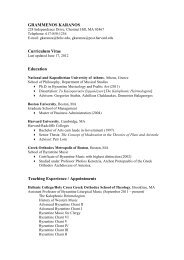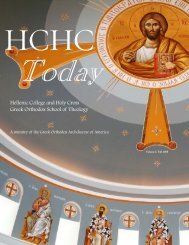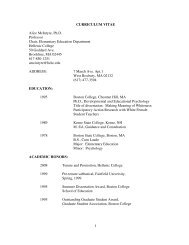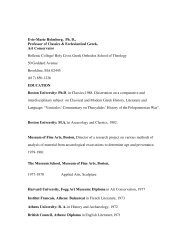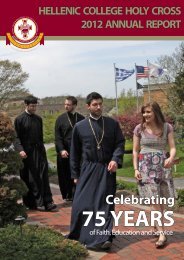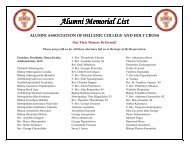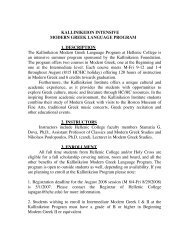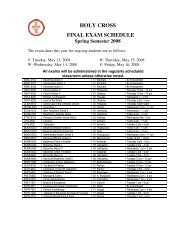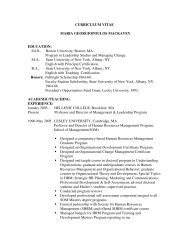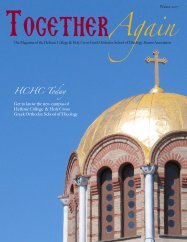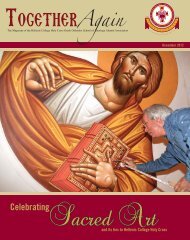GREEK, ROMAN AND BYZANTINE OBJECTS ... - Hellenic College
GREEK, ROMAN AND BYZANTINE OBJECTS ... - Hellenic College
GREEK, ROMAN AND BYZANTINE OBJECTS ... - Hellenic College
You also want an ePaper? Increase the reach of your titles
YUMPU automatically turns print PDFs into web optimized ePapers that Google loves.
1. Bronze Bread Stamps<br />
Among pre-Christian Mediterranean cultures ceremonial breads were used for<br />
festivals devoted to pagan deities. These breads could be offered to the divinity that<br />
was being honored or to the worshippers as a sacred gift from the gods. Prominent<br />
among these ancient festivals was that devoted to Asklepios, the god of health,<br />
where ceremonial bread, referred to as ὑγεíα (hygεια, or health), was distributed to<br />
the participants for the curing of illnesses or the protection against sickness. These<br />
breads were usually stamped with various symbols or with the single word “hygeia.”<br />
With the establishment of Christianity, the use of ceremonial breads<br />
continued, most importantly for the elements of the Eucharistic liturgy. The bread of<br />
the Christian oblation was also stamped with various symbols. In the early centuries<br />
the Eucharistic bread was usually given the seal of the Christogram or a simple<br />
cross. Other stamps marked the Eucharistic bread with such words as (Phos-<br />
“Light”), (Zoe-“Life”) or (Hygeia-“Health”). By the middle Byzantine<br />
period, it became customary to stamp the center of the Eucharistic bread with the<br />
marks of a central cross and within the quadrants of the cross-arms to have the<br />
letters IC XC NI KA (Jesus Christ Conquers), as is the current liturgical practice of<br />
the Orthodox Church.<br />
In addition to the Eucharistic rites, bread was used in connection with other<br />
ecclesiastical ceremonies in the early Christian and Byzantine periods. Blessed bread<br />
was given to those not receiving Communion (later to be known as the antidoroninstead<br />
of the Holy Gifts, as in the modern practice), or distributed to the faithful on<br />
the celebrations of saints’ days, great feasts of the liturgical year, or at pilgrimage<br />
sites. On such occasions bread would also be distributed to the poor. In addition,<br />
bread was given out at memorials for the dead. In general these special breads were<br />
known as eulogia breads (or blessings) and would also be stamped with either<br />
images of saints or benedictional invocations such as “health,” “life,” or “joy.”<br />
The majority of surviving early stamping instruments is bronze, although a<br />
smaller number of examples of stone, terracotta or wood are known. The stamps<br />
take on a variety of shapes: rectangular, square, triangular, circular or even slippershaped.<br />
Their texts are commonly short invocations or single words indicating some<br />
spiritual or physical blessing intended for the recipient. Usually the text of the stamp<br />
is carved in reverse so that the impression will read from left to right; however, there<br />
are a number of surviving stamps that were not carved in reverse so that the<br />
resulting seal appears backward.<br />
3



